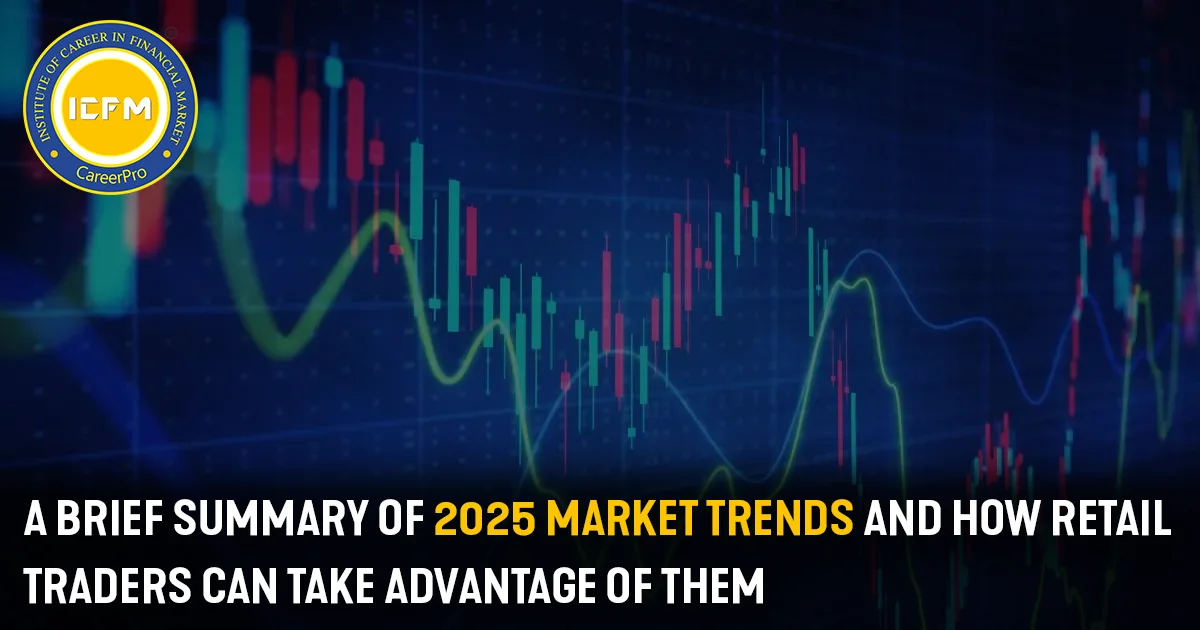As we enter 2025, India's derivatives market is going through changing paradigms that bring along with them novel opportunities as well as challenges. For the retail trader, remaining one step ahead and adapting to the changing tide of the market is the key to optimizing gains at the minimum risk. Let us now examine the crucial trends in trading derivatives and how the retail trader can use them to his advantage.
1. Retail Involvement Expansion and Technology Dominance Trend
Retail investment in the Indian market, especially in derivative business, has been continuously on the rise over the past few years. With online platforms and mobile applications available, retail traders have had greater access to markets. With the advent of Direct Market Access (DMA) and low-latency trading facilities, the gap for retail traders has decreased, and they can now trade in real time like institutional investors.
Opportunity for Retail Traders:
• Trading Apps and Platforms: Retail traders should familiarize themselves with popular trading platforms such as Zerodha, Upstox, or 5paisa that provide sophisticated features such as real-time market data, analytical tools, and algorithmic trading functionalities.
• Algorithmic and Quantitative Trading: The rising affordability and availability of algorithmic trading can allow retail traders to automate their strategy. Traders can leverage these technologies to execute high-frequency strategies or backtest trading ideas effectively.
2. Increased Volatility in the Indian Market Trend:
With uncertainty in the world economy and possible effects of drivers such as inflation, interest rate volatility, and geopolitical tensions, 2025 will witness greater market volatility. Volatility increases during earnings season, shifts in economic policy, and international events, offering opportunity for retail derivative traders, particularly in options and futures.
Retail Trader Opportunity
• Leverage Market Volatility through Options: Retail traders can leverage high volatility through the application of options strategies like straddles and strangles. The two function when there is high price movement in either direction. Even low volatility can be taken advantage of using iron condors and butterfly spreads.
• Hedging Against Volatility: Traders hedge with futures contracts. When they already own a stock and are anticipating short-term volatility, futures are employed to set a price for future delivery that will safeguard their investments.
3. Derivative Market Regulation and Investor Protection Trend
In 2025, it is expected that the Securities and Exchange Board of India (SEBI) will continue to strengthen regulations on derivatives trading to protect investors and maintain transparency. These range from tighter regulation over margin trading, enhanced risk management practices, to enhanced market surveillance.
•Adjusting to Regulatory Developments: Those who remain up-to-date about regulatory releases will be better positioned to deal with adjustments. For instance, changes in margin requirements can affect leverage as well as risk, and the traders who are informed about this will be well placed.
• Greater Transparency and Safety: Greater market monitoring and investor protection, traders are more confident in the purity of the market, knowing that manipulation and unfair play are being driven to a minimum.
4. Broader Sector-Specific Derivatives Trend:
There should be an increased tendency towards sector-specific derivatives in 2025. For instance, the establishment of derivative contracts in specific sectors (pharma, tech, and banks) is likely to provide retail traders with more sector-based opportunities. Opportunity for Retail Traders
•Sectoral Trading Strategies: Retail traders may opt to trade sectors in which they are experienced or interested. Sector-specific options and futures contract trading provide them with an opportunity to gain from trends that will not influence the overall market.
•Thematic Derivatives: New sectors such as renewable energy, EV (electric vehicle), and digital transformation may witness more derivative products. Retail traders can be prepared for early-stage investment by monitoring sector-specific news.
5. Global Influences: Global Market Impact on Indian Derivatives
Trend:
Global affairs like the monetary policy of the U.S. Federal Reserve interest rate, prices of oil, or global geo-political activity will continue to have their effect on Indian markets. Greater inclusion of the Indian market in world financial markets would mean that events in the rest of the world will have direct influence on the derivatives market.
Retail Trader Opportunity
• Global Hedging Strategies: Investors have the ability to hedge themselves from possible threats with global futures and options. For instance, if an Indian investor feels that increasing crude oil prices are going to have an impact on the Indian economy, he/she can hedge his/her threat through international futures.
• Global Trend Following: When traders follow global trends in commodities, currencies, or equity indices, they can ride on price movements that filter through Indian markets.
6. Increased Focus on Risk Management Trend:
With greater retail involvement, there will be greater focus on risk management strategies in 2025. SEBI and exchanges will institute more tools and measures to enable retail traders to better manage their downside risk, including tighter margin requirements, risk assessment through automation, and tools for liquidity management.
Opportunity for Retail Traders:
•Placing Stop-Loss and Take-Profit Orders: Professional traders should place well-defined entry and exit points with stop-loss and take-profit orders in order to maintain risks within their control. This avoids huge losses and locks in profits in a volatile market.
• Hedging and Diversification of Portfolios: As well as with traditional hedging, investors have the option of diversifying across portfolios in multiple classes of assets (currencies, stocks, and commodities) for minimizing risks. Options spread or pairs trading are some hedging methods they may also adopt in order to secure their investment from an instantaneous stock market meltdown.
Conclusion
With the unfolding of 2025, the Indian derivatives market offers untold opportunities to retail traders to ride the gamut of technologies, ride across global trends, and more. By concentrating on learning risk control, keeping abrest of what is happening by way of policy changes, and venturing out into industry-applicable strategies, retail traders stand to be highly successful. Know-how and being attuned to the ever-changing nature of India's derivative trades will be the key to winning in this dynamism-filled marketplace.









